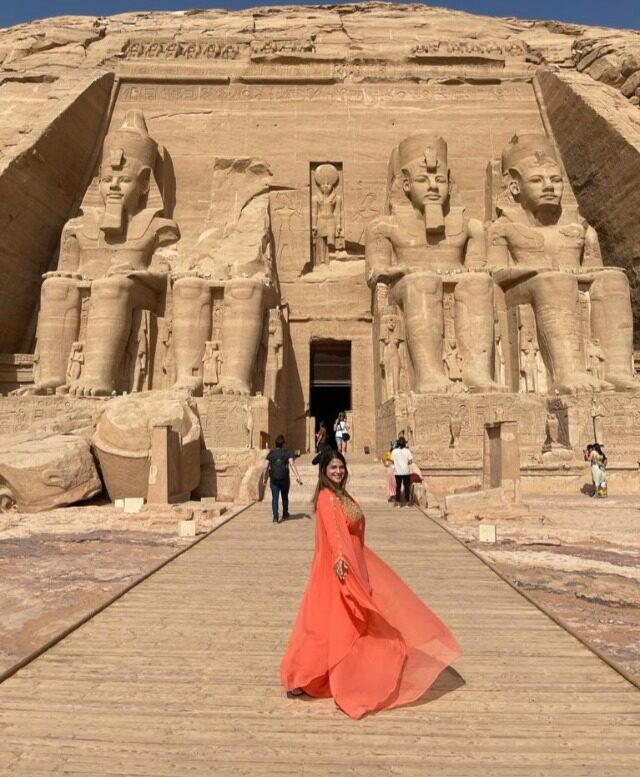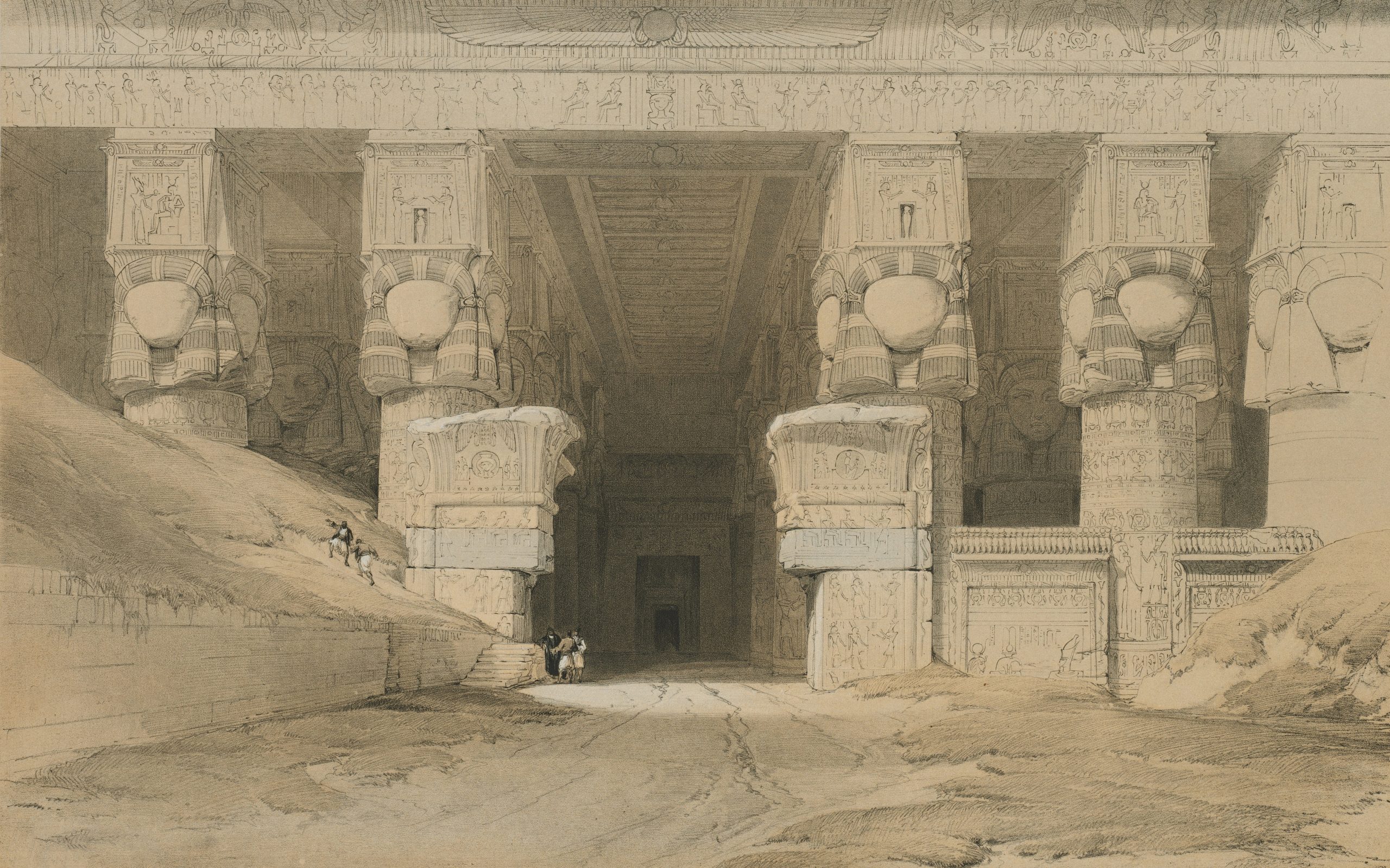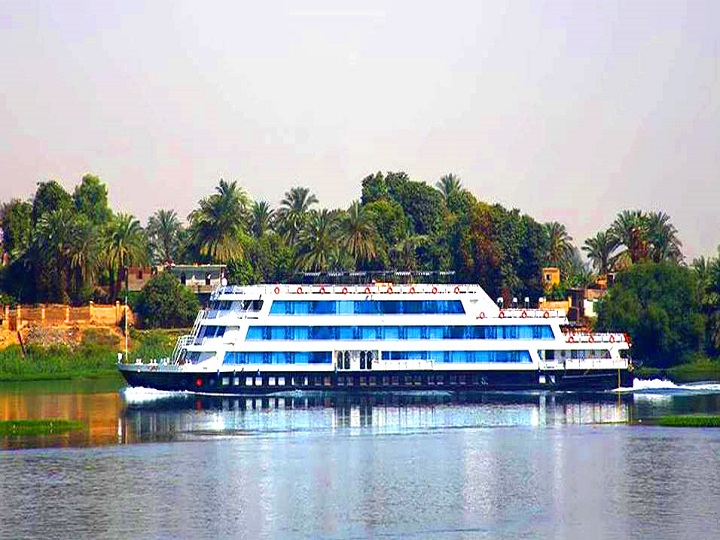This website uses cookies so that we can provide you with the best user experience possible. Cookie information is stored in your browser and performs functions such as recognising you when you return to our website and helping our team to understand which sections of the website you find most interesting and useful.

By admin on 02 Apr 2025
The historic temple of Abu Simbel in Egypt hosts a magnificent show each year when the sun’s golden rays illuminate the temple’s inner sanctum through its reflection on the enormous statues. Visitors from all over the world are enthralled by this heavenly event, which is called the Abu Simbel Sun Festival.
The temple comes alive with an ethereal radiance on the mornings of October 22 and February 22 as the sun rises. The statues of Ramses II and the gods Amun, Ra, and Ptah are illuminated by the sunbeams that extend far into the temple. As though the gods themselves are awakening from their sleep, it’s a genuinely breathtaking sight.
The history of the Abu Simbel Sun Festival is ancient and highly revered. Originally built by Ramses II in the 13th century BC, the temple was carefully designed to align with the sun’s rays on certain days. The sun’s alignment reveals the amazing skills and scientific understanding of the ancient Egyptians.
Guests of the Abu Simbel Sun Festival have the opportunity to experience the intriguing history and culture of ancient Egypt in addition to witnessing a breathtaking display of light and shadow. It’s an experience unlike any other, combining the past and present into an enthralling celebration of the glories of the cosmos and human progress.
The Legend Behind the Alignment of Sunrays
Legend has it that the sun’s ray alignment at Abu Simbel reflects the ancient Egyptians’ profound knowledge of astronomy and their religious beliefs. The temples were designed for sunrise on October 22 and February 22, for the rays to reach the inner sanctum of the larger temple, according to historical reports. The sculptures of Ramses II, Amun, Ra, and Ptah are illuminated by this phenomenon, producing a magnificent show of light that many people think represents the Pharaoh’s divine relationship with the gods. The purpose of this alignment was probably to correspond with important dates in the religious and agricultural calendars, which celebrated the rebirth of life and marked the change of seasons.
According to legend, the sun’s rays served as a means for Ramses II to communicate with the divine. To the ancient people of Egypt, the Pharaoh was a living deity, and the event was seen as a time when he was ‘reborn’ in the sun’s light. This celestial occurrence, according to the ancients, provided a window into the gods’ favor and the afterlife. It is said that the gods awaken as the sun shines on the statues inside the temple, recognizing Ramses II’s rule and his unbreakable bond with God.
Visitors have been captivated by this amazing sight for ages, drawn to the breathtaking display of light and stone coming together. Abu Simbel’s solar alignment is woven throughout the rich fabric of ancient Egyptian mythology and culture, making it more than just a scientific phenomenon. The people’s belief in the cyclical nature of life and their respect for the sun as a source of strength and vitality are recalled by the way light and shadow interact. This perspective transforms the Abu Simbel Sun Festival into a meaningful celebration of traditional beliefs and customs as well as a beautiful extravaganza.
About The Sun Festival And The Activities
Every year on October 22nd and February 22nd, Abu Simbel hosts the Sun Festival, a cultural event that draws both locals and visitors to see a spectacular celestial alignment. These dates highlight the architectural genius of the ancient Egyptians as the sun shines on the inner sanctum of the Abu Simbel temple, illuminating statues of ancient deities and Ramses II.
Visitors to the festival will enjoy a festive environment loaded with local crafts stalls, dancing performances, and traditional Egyptian music. Through interactive workshops, cultural events, and guided tours, visitors may interact with the dynamic culture. These exercises shed light on ancient Egypt’s history, architecture, and customs.
When the temple’s sanctum is illuminated at daybreak, the event’s high point is witnessed by onlookers cheering. This celebration honors ancient Egyptian ingenuity while fostering cultural appreciation and community connection.
Witnessing The Spectacular Sun Alignment
An amazing sight that demonstrates the magnificence of ancient Egyptian astronomy and building is the sun alignment at Abu Simbel. Celebrated on certain days, it brings people together in front of the opulent temple to see the statues of Ramses II and the gods Amun, Ra, and Ptah illuminated by the sun’s first rays. The event produces a breathtaking combination of light and shadow that gives the temple’s elaborate hieroglyphics and carvings an ethereal radiance.
Many people find great spirituality in this celestial phenomenon, which connects them to old beliefs and the inventiveness of the civilization that created it. The audience frequently responds with clapping and cheers, honoring the beauty and cultural significance of the occasion. The alignment emphasizes the eternal wonders of ancient Egypt as well as the lasting legacy of Ramses II.
Tips For Attending the Festival
Making plans ahead of time guarantees a fantastic Abu Simbel Sun Festival experience. Because the area gets crowded, get there early to guarantee a good viewing place. To make waiting more comfortable, bring a chair or blanket. Wear light clothing during the day and a light jacket in the evening to accommodate the fluctuating temperatures. There may not be many food options close to the location, so wear good walking shoes and pack water and snacks to remain hydrated. Remember to charge your smartphone or camera so you can record the enchanting moments of the sun alignment and joyous ambiance.
Exploring Nearby Attractions
In addition to the festival, there are other attractions in the vicinity. The large artificial lake known as Lake Nasser offers breathtaking vistas as well as boat cruises, fishing, and birdwatching opportunities. 45 kilometers from Abu Simbel, the Temple of Amada has elaborate wall reliefs and inscriptions that highlight long-standing religious customs. The nearby Tombs of the Nobles provide more insight into the history of the area. To gain a deeper understanding of Egypt’s rich history, visitors can also explore the village of Abu Simbel to learn about local customs, crafts, and daily life.
Accommodation And Transportation Options for Visitors
Visitors to the Abu Simbel Sun Festival have various accommodation options for tourists, from luxury Nile cruise to budget-friendly lodges, many offering stunning views of the temples and Lake Nasser cruise. Early booking is recommended due to high demand during the festival.
Buses and organized excursions are popular options due to their convenience, picturesque roads, and transportation that starts 280 kilometers away in Aswan. Travelers who want flexibility might choose to rent a car or use a private taxi service.
Once in Abu Simbel, it’s easy to walk around the temples and the surroundings. In addition to providing transportation to neighboring sites, guided excursions offer a thorough understanding of the rich history and culture of the area. Whether traveling in a group or exploring on their own, tourists can have a smooth and enjoyable trip to Abu Simbel.
Conclusion And Final Thoughts On The Abu Simbel Sun Festival
More than just a heavenly event, the Abu Simbel Sun Festival honors the inventiveness, cultural legacy, and interpersonal relationships of ancient Egypt. The festival gives visitors a chance to pause and consider the accomplishments and cosmic knowledge of ancient Egypt by showcasing the sun’s amazing alignment with the statues of Ramses II and the gods.
The lively celebrations, including dancing, music, and hands-on workshops, introduce tourists to Egyptian culture while encouraging awe and a sense of togetherness among the many guests. The enduring human search for purpose and connection is demonstrated by this age-old custom.
To sum up, the event creates a magnificent experience by fusing history, culture, and heavenly beauty. Whether captivated by the charm of unusual travel, history, or cultural exploration. The Abu Simbel Sun Festival promises an unforgettable journey into the heart of ancient Egypt.
This article was updated and re-written in part by Hesham El Gammal; on April 2nd 2025 + fact-checked.
Categories
- Egypt and Jordan Tours (12)
- Egypt Destinations (26)
- Egypt Nile Cruises (40)
- Egypt Sightseeing (14)
- Egypt Tour Packages (17)
- infographics (1)
-

Nile Cruisers Reviews
25 Mar 2025
-

Why Choose Nile Cruisers to Book Your Egypt Nile Cruise?
12 Dec 2025
-

Celebrate Christmas in Egypt: Best Egypt Travel Tour Packages for Year-End Getaways
12 Dec 2025
-

Make Your Year-End Special: Festive Egypt Tour Packages for Winter Travel
12 Dec 2025
-

The Lake Nasser Luxury Cruise Ships
09 Dec 2025
-

Sacred Egypt – Spiritual Tours
07 Dec 2025
-

Nile Cruise from Cairo to Aswan
06 Dec 2025
-

Nile Cruisers Reviews
25 Mar 2025
-

Why Choose Nile Cruisers to Book Your Egypt Nile Cruise?
12 Dec 2025
-

Celebrate Christmas in Egypt: Best Egypt Travel Tour Packages for Year-End Getaways
12 Dec 2025
-

Make Your Year-End Special: Festive Egypt Tour Packages for Winter Travel
12 Dec 2025
-

The Lake Nasser Luxury Cruise Ships
09 Dec 2025













Comments